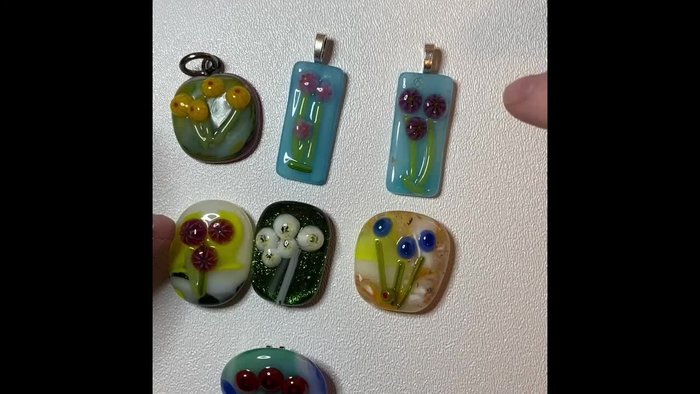Fused glass offers a captivating medium for creating unique and stunning jewelry, and pendant making is a particularly rewarding avenue to explore. The luminous depth and vibrant colors achievable through fusing glass are simply breathtaking, transforming ordinary materials into wearable works of art. From simple, elegant designs to complex, intricate patterns, the possibilities are as limitless as your imagination. The mesmerizing interplay of light and color within a finished fused glass pendant is a testament to the artistry and skill involved in its creation.
This guide will unveil the secrets to crafting your own exquisite fused glass pendants, taking you from initial design conception to the final, polished piece. Get ready to delve into a step-by-step process that will empower you to create beautiful and unique jewelry, perfect for personal use or as thoughtful, handcrafted gifts.
Safety Guidelines
- Always wear safety glasses to protect your eyes from flying glass fragments during cutting and grinding.
- Use appropriate respiratory protection (e.g., a respirator mask) when working with glass powders or fumes, especially during grinding and sanding.
- Work in a well-ventilated area to avoid inhaling fumes from the kiln during firing. High temperatures can also be dangerous; be aware of kiln safety guidelines.
Methods: La Fouree (A Thousand Flowers) Technique
Tools Needed
- Fuse glass
Step-by-Step Instructions
Flower Creation
- Create small, flower-like shapes from fused glass.

Flower Creation Bouquet Assembly
- Arrange the glass flowers into small bouquets.

Bouquet Assembly Fusion and Finishing
- Fuse the bouquets together to create pendants or magnets.

Fusion and Finishing
Tips
- These pendants are perfect for any occasion.
Methods: Geometric Stringer Pendant Technique
Tools Needed
- Fuse glass stringers
Step-by-Step Instructions
Shape Creation
- Create small geometric shapes using glass stringers.

Shape Creation Pendant Assembly
- Fuse the shapes together to form pendants.

Pendant Assembly Finishing Touches
- Add pinch bails for easy wearing.

Finishing Touches
Tips
- Incorporate dichroic or iridized glass for added visual interest.
Methods: Tumbled Glass Pendant Technique
Tools Needed
- Fuse glass, tumbler
Step-by-Step Instructions
Glass Shape Creation
- Create small glass shapes.

Glass Shape Creation Tumbling Process
- Tumble the glass pieces to achieve a smooth, sea-glass effect.

Tumbling Process Finishing Touches
- Drill holes in the tumbled pieces and add pinch bails.

Finishing Touches
Methods: Pressed Glass Pendant Technique
Tools Needed
- Fuse glass, pressing equipment
Step-by-Step Instructions
Pressing the Glass
- Press fused glass to create thin, delicate shapes.

Pressing the Glass Tumbling (Optional)
- Tumble the pressed glass for added smoothness.

Tumbling (Optional)
Tips
- Pressed glass results in a unique, thin profile compared to traditionally fused glass.
Methods: Screen Printing on Fused Glass
Tools Needed
- Fuse glass, screen printing equipment
Step-by-Step Instructions
Apply Screen-Printed Designs
- Apply screen-printed designs onto fused glass pieces.
- Experiment with simple or complex designs.


Apply Screen-Printed Designs Combine with Other Techniques
- Combine screen printing with other techniques like etching or layering dichroic glass for added depth and complexity.

Combine with Other Techniques Advanced Layering Techniques
- Build up layers for advanced techniques, screen printing on the back after building the front.

Advanced Layering Techniques
Tips
- Transparent glass allows the background color to influence the overall design.
Read more: Dollar Tree Vase Transformations: DIY High-End Decor














